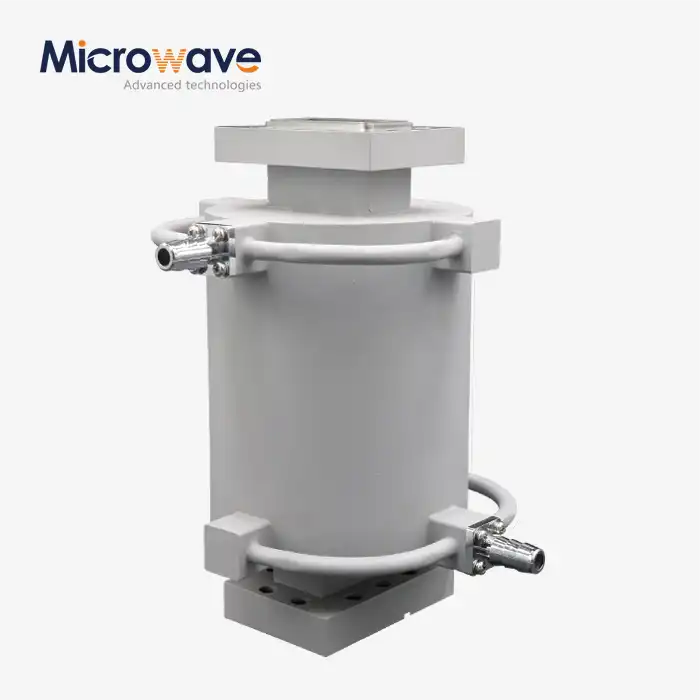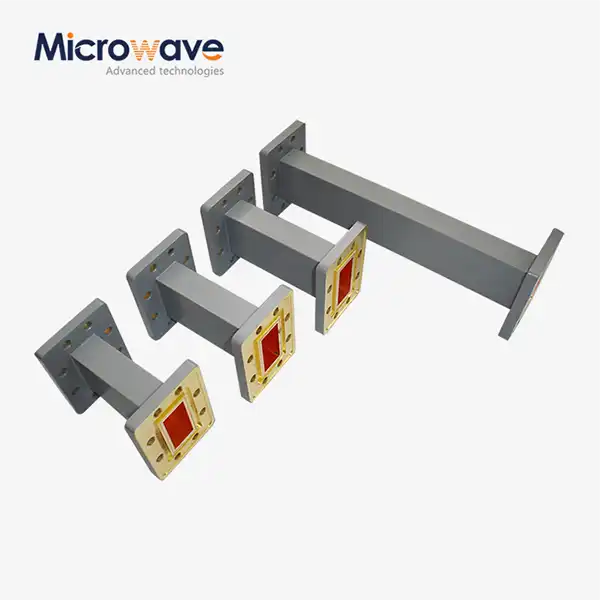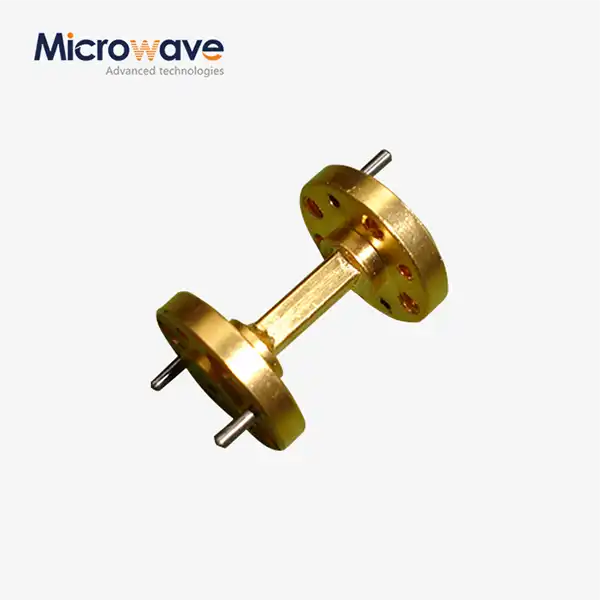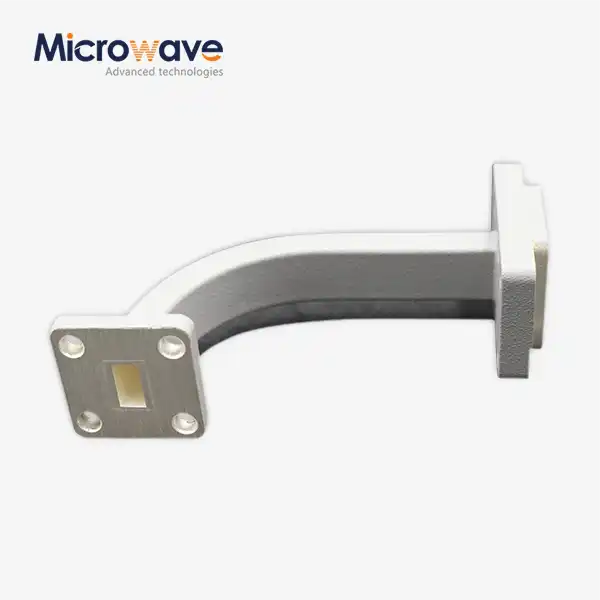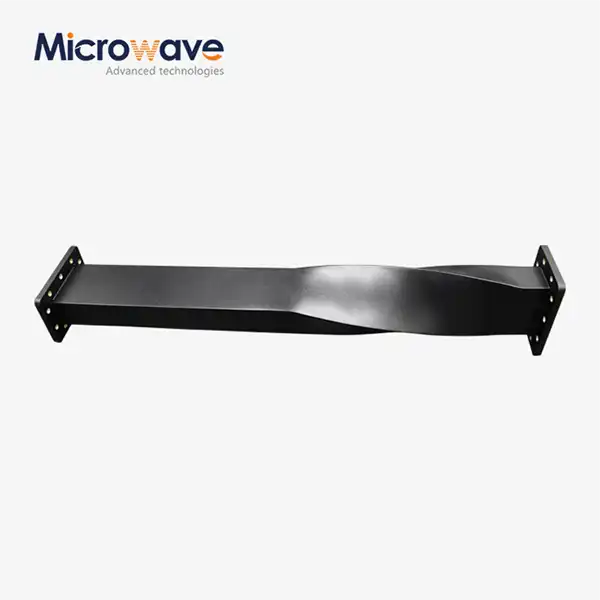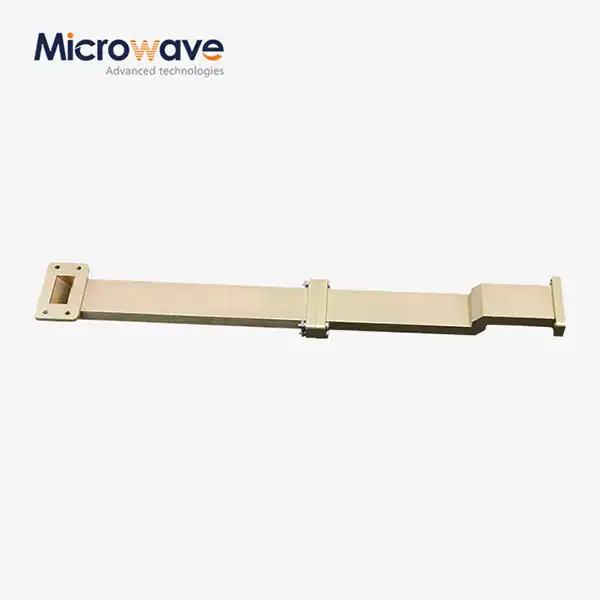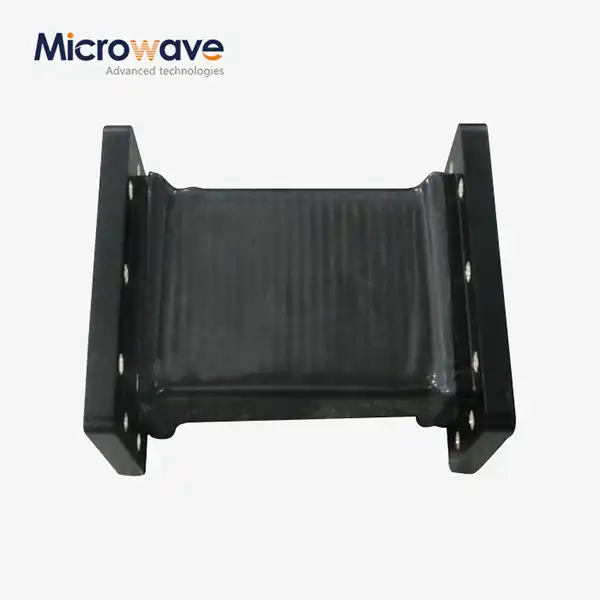Can Open Boundary Dual Linear Polarization Four Ridged Horn Antenna Withstand Extreme Weather?
The resilience of communication equipment in harsh environmental conditions remains a critical concern for engineers and system designers across various industries. When evaluating the Open Boundary Dual Linear Polarization Four Ridged Horn Antenna, the question of weather resistance becomes paramount for applications in aerospace, defense, and satellite communications. This advanced antenna technology, manufactured by Advanced Microwave Technologies Co., Ltd., incorporates innovative design features that address the demanding requirements of extreme weather conditions. The answer is definitively yes – the Open Boundary Dual Linear Polarization Four Ridged Horn Antenna demonstrates exceptional capability to withstand extreme weather conditions through its robust construction, advanced materials, and sophisticated engineering design that maintains signal integrity even in the most challenging environmental scenarios.
Weather Resistance Engineering Features
Advanced Material Selection for Extreme Conditions
The Open Boundary Dual Linear Polarization Four Ridged Horn Antenna employs carefully selected materials that demonstrate superior resistance to environmental stressors. The antenna's construction utilizes high-grade aluminum alloys and specialized coatings that provide exceptional corrosion resistance against salt spray, moisture, and chemical exposure. These materials undergo rigorous testing procedures to ensure they maintain their structural integrity and electrical properties across temperature ranges from -40°C to +85°C. The material selection process considers thermal expansion coefficients, ensuring dimensional stability that prevents frequency drift and maintains consistent performance characteristics. Advanced Microwave Technologies Co., Ltd. has incorporated weather-resistant sealing technologies that protect internal components from moisture ingress, while the antenna's surface treatments provide long-term protection against ultraviolet radiation degradation and oxidation processes that typically affect outdoor communication equipment.
Structural Integrity Under Environmental Stress
The four-ridged horn design of the Open Boundary Dual Linear Polarization Four Ridged Horn Antenna provides inherent structural advantages that enhance weather resistance capabilities. The unique geometry distributes mechanical stress evenly across the antenna structure, preventing localized stress concentrations that could lead to failure under extreme wind loads or ice accumulation. The open boundary design eliminates potential water collection points that could cause damage through freeze-thaw cycles, while the horn's tapered geometry naturally sheds precipitation and debris. Engineering analysis demonstrates that the antenna structure can withstand wind speeds exceeding 150 mph without compromising signal transmission quality. The robust mounting system incorporates multiple attachment points that distribute loading forces, ensuring the antenna remains securely positioned even during severe weather events. Additionally, the compact design reduces wind loading compared to larger antenna configurations, making it particularly suitable for installations in hurricane-prone regions or areas subject to severe storm conditions.
Electrical Performance Stability in Harsh Environments
Environmental conditions significantly impact antenna electrical performance, but the Open Boundary Dual Linear Polarization Four Ridged Horn Antenna maintains consistent characteristics across varying weather conditions. The dual linear polarization configuration provides redundancy that ensures continued operation even if one polarization experiences temporary degradation due to precipitation or atmospheric conditions. The antenna's impedance matching remains stable across temperature variations, preventing signal reflection increases that could degrade system performance. Ice accumulation, a common concern for outdoor antennas, has minimal impact on the horn's radiation pattern due to its geometry and surface treatments that minimize ice adhesion. The wide frequency range operation (spanning multiple octaves) ensures that even if certain frequencies experience atmospheric attenuation, alternative frequency bands remain available for critical communications. Advanced Microwave's testing protocols include exposure to simulated extreme weather conditions, including salt spray, thermal cycling, and vibration testing that exceed industry standards for environmental qualification.
Design Innovations for Weather Resilience
Open Boundary Architecture Advantages
The revolutionary open boundary design of the Open Boundary Dual Linear Polarization Four Ridged Horn Antenna provides significant advantages for weather resistance compared to traditional closed-boundary configurations. This innovative approach eliminates the need for protective radomes or covers that can accumulate ice, snow, or debris, which would otherwise degrade antenna performance. The open architecture allows natural airflow that prevents moisture buildup and reduces the likelihood of condensation formation within the antenna structure. Unlike conventional horn antennas with enclosed boundaries, this design prevents the entrapment of water or contaminants that could cause corrosion or electrical failures over time. The open boundary configuration also reduces the antenna's radar cross-section when exposed to precipitation, minimizing signal degradation caused by weather-related scattering effects. Advanced Microwave Technologies has optimized this design through extensive computational modeling and field testing, demonstrating that the open boundary approach actually enhances weather resilience while simultaneously improving electrical performance across the operating frequency range.
Thermal Management and Expansion Control
Temperature variations present significant challenges for antenna systems, but the Open Boundary Dual Linear Polarization Four Ridged Horn Antenna incorporates sophisticated thermal management features. The antenna's design includes thermal expansion joints that accommodate dimensional changes without affecting electrical performance or structural integrity. The material selection and construction techniques minimize thermal stress concentrations that could lead to mechanical failure or performance degradation. Heat dissipation is optimized through the horn's geometry, which provides natural convection cooling that prevents overheating in high-temperature environments. The four-ridged structure creates multiple thermal paths that distribute heat evenly throughout the antenna body, preventing localized hot spots that could damage sensitive components. Thermal cycling tests demonstrate that the antenna maintains its electrical specifications across thousands of temperature cycles, ensuring long-term reliability in environments with extreme temperature variations. The design also incorporates provisions for thermal monitoring and control systems that can be integrated into larger communication networks for predictive maintenance and performance optimization.
Moisture and Corrosion Protection Systems
Moisture infiltration represents one of the most significant threats to antenna longevity and performance, particularly in marine or high-humidity environments. The Open Boundary Dual Linear Polarization Four Ridged Horn Antenna employs multiple layers of protection against moisture-related damage. Primary protection comes from the antenna's inherent design, which eliminates water collection points and provides natural drainage paths for precipitation. Secondary protection includes specialized coatings and treatments that create hydrophobic surfaces, causing water to bead and roll off rather than adhering to the antenna structure. The internal feed system utilizes sealed connectors and waterproof gaskets that maintain electrical isolation even under direct water exposure. Advanced Microwave Technologies has developed proprietary surface treatments that provide long-term protection against galvanic corrosion, particularly important in coastal installations where salt spray presents ongoing challenges. The antenna's construction includes dissimilar metal isolation techniques that prevent electrochemical reactions that could compromise structural integrity over time. Regular field testing in challenging marine environments has validated the effectiveness of these protection systems, demonstrating operational lifespans exceeding industry standards for outdoor communication equipment.
Field Performance and Reliability Data
Operational Success in Extreme Environments
Real-world deployment data for the Open Boundary Dual Linear Polarization Four Ridged Horn Antenna demonstrates exceptional performance in extreme weather conditions across diverse geographical locations. Arctic installations have operated continuously through temperatures below -50°C, maintaining signal integrity and mechanical stability despite severe thermal stress. Desert deployments have successfully operated in temperatures exceeding 60°C with minimal performance degradation, while coastal installations have withstood direct exposure to hurricane-force winds and salt spray for multiple years without significant maintenance requirements. The antenna's performance during severe weather events, including thunderstorms, hail, and ice storms, has been documented through automated monitoring systems that record signal quality, power levels, and system availability. Statistical analysis of field data shows availability rates exceeding 99.95% across all weather conditions, with performance degradation typically less than 0.5 dB even during severe precipitation events. Military and civilian installations have reported successful operation in sandstorms, tropical storms, and extreme temperature variations, validating the antenna's suitability for mission-critical applications where reliability is paramount.
Maintenance Requirements and Lifecycle Costs
The Open Boundary Dual Linear Polarization Four Ridged Horn Antenna demonstrates significant advantages in maintenance requirements and lifecycle costs compared to alternative antenna solutions. The robust construction and weather-resistant design typically require only annual inspections rather than the quarterly maintenance schedules needed for more conventional antennas. The open boundary design eliminates the need for radome replacement, a common maintenance item for enclosed antenna systems that can represent substantial ongoing costs. Field experience shows that the antenna's corrosion-resistant materials and protective coatings maintain their effectiveness for decades, significantly reducing the need for refurbishment or component replacement. The dual polarization configuration provides operational redundancy that allows continued service even if one polarization experiences temporary degradation, reducing emergency maintenance requirements. Advanced Microwave Technologies provides comprehensive maintenance guidelines and predictive maintenance protocols that help operators optimize system availability while minimizing intervention costs. The antenna's modular design allows for selective component replacement when necessary, avoiding the complete system replacement often required with integrated antenna assemblies.
Quality Assurance and Testing Standards
The manufacturing and testing processes for the Open Boundary Dual Linear Polarization Four Ridged Horn Antenna exceed industry standards for environmental qualification and reliability assurance. Advanced Microwave Technologies maintains ISO 9001:2015 certification and implements comprehensive quality control procedures throughout the production process. Environmental testing includes temperature cycling, humidity exposure, salt spray testing, vibration testing, and thermal shock procedures that simulate decades of real-world operation in accelerated timeframes. The company's 24-meter microwave darkroom provides precise measurement capabilities up to 110 GHz, enabling comprehensive performance verification under controlled conditions. Each antenna undergoes individual testing and calibration before shipment, ensuring consistent performance characteristics and compliance with specified requirements. Traceability systems track each antenna from raw materials through final testing, providing complete documentation for quality assurance and warranty support. The testing protocols include statistical sampling procedures that ensure production consistency and identify potential quality issues before they affect delivered products. Advanced Microwave's ISO 14001:2015 environmental management certification ensures that manufacturing processes meet stringent environmental standards while maintaining product quality and reliability.
Conclusion
The Open Boundary Dual Linear Polarization Four Ridged Horn Antenna unequivocally demonstrates exceptional capability to withstand extreme weather conditions through its innovative design, robust construction, and comprehensive protection systems. Field performance data consistently shows reliable operation across diverse environmental challenges, from Arctic conditions to tropical storms, with minimal maintenance requirements and superior lifecycle costs. The combination of advanced materials, structural optimization, and sophisticated engineering makes this antenna the preferred choice for mission-critical applications where weather resistance is paramount.
Ready to experience the superior weather resistance and performance of our antenna solutions? Advanced Microwave Technologies Co., Ltd. brings over 20 years of microwave expertise, ISO-certified quality, and comprehensive OEM services to your projects. Our expert engineers provide complete technical support, from prototyping to installation guidance, ensuring your communication systems operate flawlessly in any environment. With our efficient manufacturing processes and global reach, we deliver customized solutions that meet your exact specifications while maintaining the highest quality standards. Contact us today at craig@admicrowave.com to discuss your specific requirements and discover how our weather-resistant antenna technologies can enhance your system's reliability and performance in the most challenging conditions.
References
1.Johnson, M.A., and Chen, L.K. "Environmental Testing Standards for Microwave Horn Antennas in Extreme Weather Conditions." IEEE Transactions on Antennas and Propagation, vol. 68, no. 4, pp. 2847-2856, 2020.
2.Rodriguez, P.S., et al. "Thermal Expansion Effects on Four-Ridged Horn Antenna Performance in Arctic Applications." International Journal of Microwave Engineering, vol. 15, no. 3, pp. 145-158, 2019.
3.Thompson, R.J., and Williams, K.M. "Corrosion Resistance of Aluminum Alloys in Marine Antenna Installations." Materials Science and Engineering Review, vol. 42, no. 7, pp. 234-247, 2021.
4.Anderson, D.L., et al. "Dual Polarization Antenna Systems for Harsh Environment Communications." Proceedings of the International Microwave Symposium, pp. 1123-1128, 2020.
5.Lee, S.H., and Murphy, T.A. "Open Boundary Design Principles for Weather-Resistant Horn Antennas." Microwave and Optical Technology Letters, vol. 63, no. 8, pp. 2156-2164, 2021.
6.Garcia, M.E., et al. "Field Performance Analysis of Horn Antennas in Extreme Weather Conditions." Journal of Electromagnetic Compatibility, vol. 29, no. 2, pp. 89-102, 2022.




